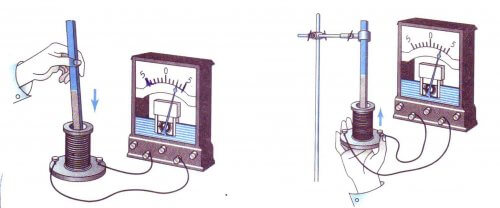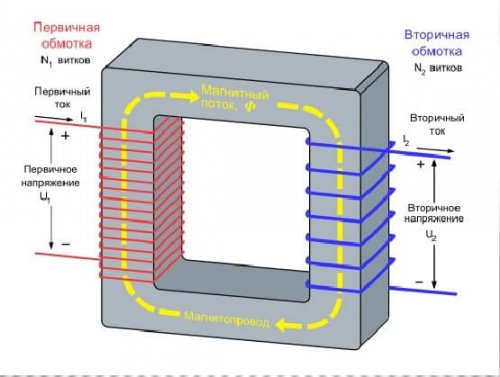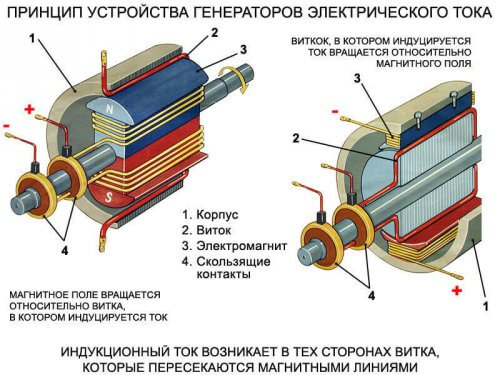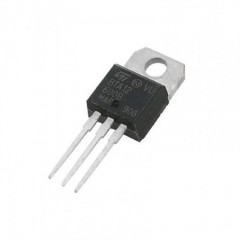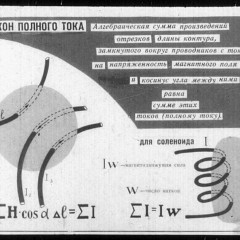What is EMF - explanation in simple words
Before moving on to the main part of the article, we note that the EMF and voltage are very close in meaning, but still somewhat different. In short, the EMF is at the power source without load, and when the load is connected to it, this is voltage. Because the number of volts on the FE under load is almost always somewhat less than without it. This is due to the presence of internal resistance of such power sources as transformers and galvanic cells.
Electromagnetic induction (self-induction)
Let's start with electromagnetic induction. This phenomenon describes the law. electromagnetic induction faraday. The physical meaning of this phenomenon is the ability of an electromagnetic field to induce an EMF in a nearby conductor. In this case, either the field should change, for example, in the magnitude and direction of the vectors, or move relative to the conductor, or the conductor should move relative to this field. At the ends of the conductor in this case, a potential difference occurs.
There is another phenomenon that is similar in meaning - mutual induction. It consists in the fact that a change in the direction and current strength of one coil induces an EMF at the terminals of a nearby coil; it is widely used in various fields of technology, including electrics and electronics. It underlies the operation of transformers, where the magnetic flux of one winding induces current and voltage in the second.
In electrics, a physical effect called EMF is used in the manufacture of special AC converters that provide the desired values of effective values (current and voltage). Thanks to the phenomena of induction and self-induction engineers were able to develop many electrical devices: from conventional inductor (throttle) and up to the transformer.
The concept of mutual induction refers only to alternating current, during the passage of which the magnetic flux changes in the circuit or conductor.
For a direct current electric current, other manifestations of this force are characteristic, such as, for example, the potential difference at the poles of a galvanic cell, which we will discuss later.
Electric motors and generators
The same electromagnetic effect is observed in the design asynchronous or synchronous electric motorwhose main element is inductive coils. About his work in an accessible language is described in many textbooks related to the subject called "Electrical Engineering". To understand the essence of the processes, it is enough to recall that the induction emf is induced when the conductor moves inside another field.
According to the law of electromagnetic induction mentioned above, an on-board EMF is often induced in the motor armature winding during operation, which is often called “counter-EMF”, because when the engine is running, it is directed towards the applied voltage. This also explains the sharp increase in the current consumed by the motor with increasing load or jamming of the shaft, as well as inrush currents. For an electric motor, all the conditions for the appearance of a potential difference are obvious - a forced change in the magnetic field of its coils leads to the appearance of torque on the axis of the rotor.
Unfortunately, we will not delve into this topic within this article - write in the comments if you are interested in it, and we will talk about it.
In another electrical device - a generator, everything is exactly the same, but the processes occurring in it have the opposite direction. An electric current is passed through the windings of the rotor, a magnetic field arises around them (permanent magnets can be used). When the rotor rotates, the field, in turn, induces an EMF in the stator windings - from which the load current is removed.
Some more theory
When designing such circuits, the distribution of currents and the voltage drop across individual elements are taken into account. To calculate the distribution of the first parameter, a well-known physics second law of Kirchhoff - the sum of the voltage drops (taking into account the sign) on all branches of the closed circuit is equal to the algebraic sum of the EMF of the branches of this circuit), and to determine their values use Ohm's law for a chain section or Ohm's law for a complete chain, the formula of which is given below:
I = E / (R + r),
Where E - EMF, R is the load resistance r is the resistance of the power source.
The internal resistance of a power source is the resistance of the windings of generators and transformers, which depends on the cross section of the wire with which they are wound and its length, as well as the internal resistance of galvanic cells, which depends on the state of the anode, cathode and electrolyte.
When carrying out the calculations, the internal resistance of the power source, considered as a parallel connection to the circuit, must be taken into account. With a more accurate approach, taking into account the large values of the operating currents, the resistance of each connecting conductor is taken into account.
EMF at home and units
Other examples are found in the practical life of any ordinary person. Such familiar things as small-sized batteries, as well as other miniature batteries, fall into this category. In this case, the working emf is formed due to chemical processes occurring inside the constant voltage sources.
When it occurs at the terminals (poles) of the battery due to internal changes - the element is completely ready for operation. Over time, the magnitude of the EMF decreases slightly, and the internal resistance increases markedly.
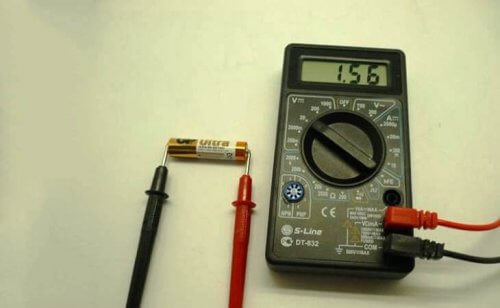
As a result, if you measure the voltage on a fingerless battery that is not connected to anything, you see 1.5V normal for it (or so), but when the load is connected to the battery, let's say you installed it in some device - it does not work.
Why? Because if you assume that the internal resistance of the voltmeter is many times higher than the internal resistance of the battery, then you measured its EMF. When the battery began to give current in the load at its terminals, it became not 1.5V, but, say, 1.2V - neither the voltage nor the current was enough for normal operation of the device. Just these 0.3V and fell on the internal resistance of the galvanic cell. If the battery is completely old and its electrodes are destroyed, then there may not be any electromotive force or voltage at the battery terminals - i.e. zero.
This example clearly demonstrates the difference between EMF and voltage. The author tells the same thing at the end of the video, which you see below.
You can learn more about how the emf of a galvanic cell arises and how it is measured in the following video:
A very small electromotive force is also induced within the receiver's antenna, which is then amplified by special stages, and we get our television, radio and even Wi-Fi signal.
Conclusion
Let's summarize and once again briefly recall what EMF is and in what SI units this value is expressed.
- EMF characterizes the work of external forces (chemical or physical) of non-electrical origin in an electrical circuit. This force performs the work of transferring electric charges to it.
- EMF, like voltage, is measured in Volts.
- The differences between the EMF and the voltage are that the first is measured without load, and the second with load, and the internal resistance of the power source is taken into account and has an effect.
And finally, to consolidate the material covered, I advise you to watch another good video on this topic:
Related materials:

